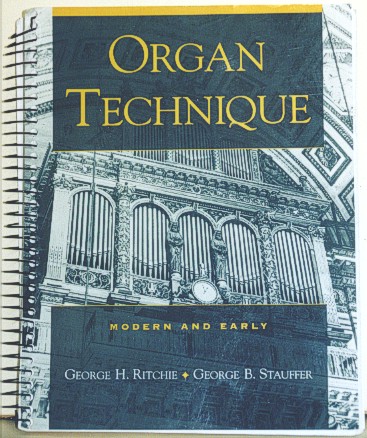|
The
Reviews
|
| |
| The
Diapason, April,
1993 |
| "The method by Ritchie and Stauffer is a
masterwork of scholastic pedagogy, reflecting all of the latest performance
practice research and appealing to the serious organ student." |
| |
| The
American Organist, December,
1992 |
| "George Ritchie and George Stauffer are to
be commended for compiling one of the most comprehensive organ methods
available today....Surely the Ritchie-Stauffer method will find wide
use and acceptance well into the 21st century." |
| |
| Music
Library Association Notes,
September, 1994 |
| "With the increased interest in historical
performance styles, the task of writing (and indeed reviewing) a method
in organ technique and performance has become considerably more complex.
On the one hand, the incipient performer needs guidance in basic technique,
posture, and approach to performance; on the other, the modern writer
feels enjoined to provide statements and advice that are historically
appropriate, or at least plausible. And these two issues are related
in complex ways: the basic technique, posture, approach to performance
are themselves historically contingent; furthermore, not every historical
technique is necessarily "good" and none should be uncritically
accepted....Organ Technique: Modern and Early is the first
major organ method to present two fundamentally distinct historical
styles of technique and performance (one for the 'modern' repertory
after 1750 and one for the 'early' repertory before 1750)....The chapters
on the basic playing forms in 'modern' technique are clear and carefully
paced, providing simple pedagogical pieces by composers such as Lemmens,
Léon Boëllmann, and Marcel Dupré. Throughout, the
authors successfully blend a practical and pragmatic approach with
a scholarly sensitivity to the original nineteenth-century literature
on organ technique (most notably the method of Lemmens)....The 'early'
chapters maintain the same judicious blend of pragmatic advice and
historical fidelity as those devoted to 'modern' technique....In short,
this method covers a wider range of issues and provides a broader
basis of organ study than any previous publication....I picked up
only a few errors on a single detailed reading....These should not
detract from the tremendous value of the book, which should, in any
case, inspire the young player to study and explore beyond its limits." |
| |
| Music and Letters, Vol.
82, No. 3, August 2001 |
|
"This
volume acknowledges the fissure that has opened - largely since
about 1964 - between organ playing grounded in the vision of one
instrument and one technique designed for the whole repertory and
that committed to specialized instruments and techniques for the
repertory of specific times and places; moreover, the authors seek
to work with this tension as a strength of the postmodern condition.
By salvaging the authority of the former for much Romantic and modern
literature, codifying for students the vagaries of the latter (with
a focus that never really loses sight of Bach), they provide a new
and provocative way of teaching organ performance. . . .
"While
many of Ritchie and Stauffer's contemporaries have abandoned a one-size-fits-all
approach to the organ itself (relegating the neo-classical organ,
designed to play the entire repertory, to a phase of history that
is now over), these two organists have gone further than most in
seeking to discard a similar approach to teaching organ technique.
With an appealing tone that is both serious and optimistic, yet
includes occasional asides of homespun advice, they juxtapose a
detailed discussion of the standard way the organ has been taught
for the last century or so, following principles developed in the
middle of the nineteenth century, with an equally systematic method
for playing early music, defined chiefly as the music of Bach.
"Much
of what the authors do with the traditional (i.e., 'modern') approach
to playing the organ is not new. (This material has, after all,
been discussed in numerous treatises over the last hundred years.)
Their first two chapters, however, do provide a particularly elegant
presentation of this tradition, enriched by an impressive musicological
rigour that in itself sets a new standard for such an undertaking.
. . .
"Not
every organ student aspires to be a university organist: some study
the instrument in order to play hymns in church (or because their
parents would like them to do so), while others just want to play
the Toccata and Fugue in D minor (and are not bothered if it is
really by Bach, originally for the organ, or even belongs in D minor).
Yet for students with eyes (and ears) wide open to the whole of
the field, in a position to understand the instrument and its music
as historical artefacts - indeed, as a magnificent legacy from the
past - and not merely as vehicles for self-promotion, this book
will be a wonderful resource."
|
|
